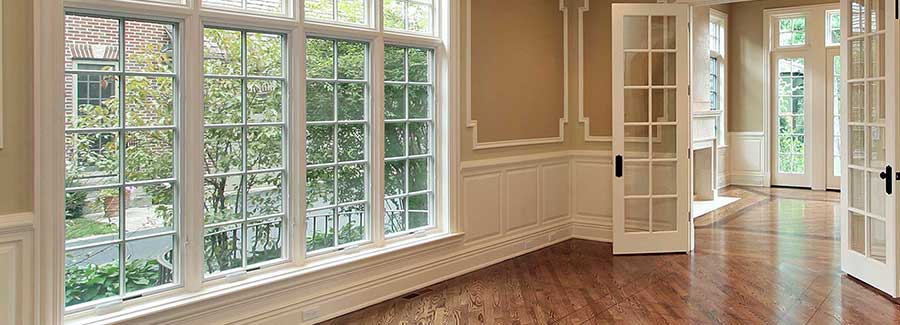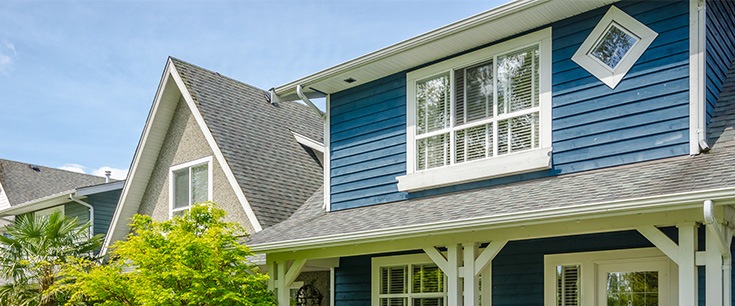Choosing the Best Materials for a Front Entry Door | Material for Entry Door
In the quest for the best materials for a front entry door, practicality meets personal style. Beyond a mere introduction to wood, fiberglass, steel, and aluminum, this guide offers a clear breakdown of their performance against climate, intruders, and the test of time. Ready for an uncomplicated look at what will work best for your home’s entrance? Here’s a practical walkthrough to pinpoint your perfect match.
Key Takeaways
- When selecting a front entry door, homeowners should consider the material’s impact on climate resistance, security, maintenance, and style preferences to ensure alignment with their lifestyle and home aesthetic.
- Different materials offer unique benefits: wood provides classic beauty but requires more maintenance; fiberglass offers durability and low maintenance; steel excels in security; and aluminum is lightweight and low-maintenance.
- Incorporating glass panels in doors can enhance natural light and curb appeal but may affect privacy; homeowners should weigh the pros and cons of glass types with regard to energy efficiency and maintenance.
Evaluating Your Front Entry Door Needs
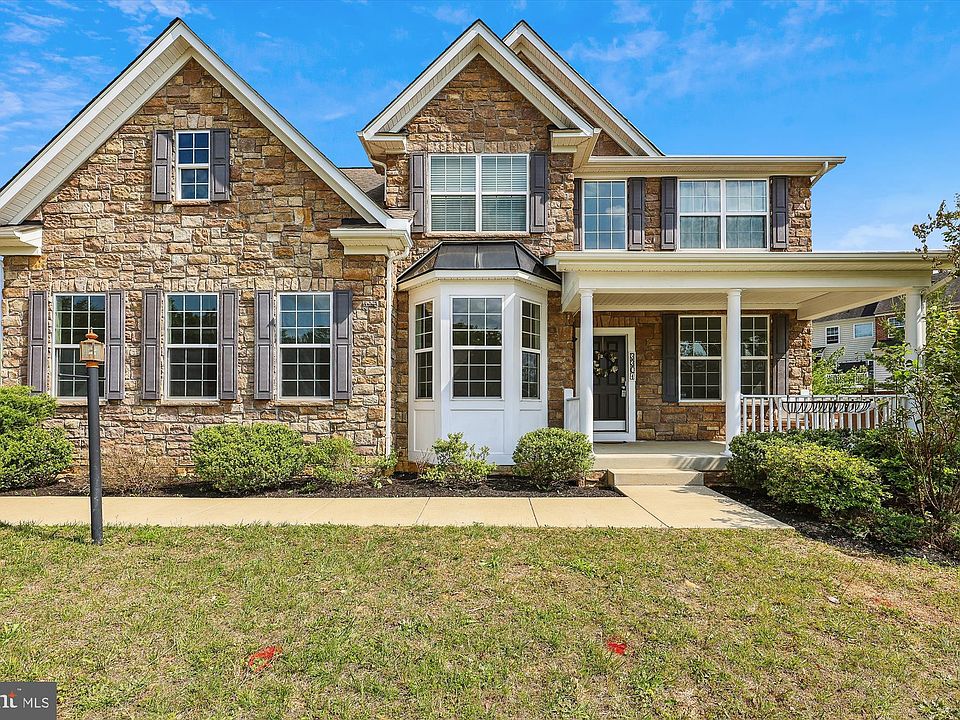
Your front door is more than a point of entry; it’s the vanguard of your home’s character and your first line of defense against the elements and unwelcome guests. When choosing front doors, consider the unique palette of your lifestyle needs and preferences, including:
- Climate
- Security
- Maintenance
- Style
Whether you opt for wood, fiberglass, steel, or another material, your selection will significantly influence how your home greets the world and stands the test of time.
Climate Considerations
Have you ever been frustrated by a door that sticks or doesn’t seal properly as the seasons change? The material of your front door can mean the difference between a barrier that buckles under the pressure of humidity and temperature or one that stands steadfast.
Fiberglass, for instance, remains unyielding against warping and energy loss, while wood’s classic charm comes with a need for vigilance against weather-induced strain.
Security Requirements
A solid core door does more than give you peace of mind during the late hours; it acts as a robust barrier against potential intruders. Steel doors, with their formidable construction, offer top-tier defense, while innovations in aluminum doors bring high-tech security features into the equation.
Remember, the presence of glass in your door, while aesthetically pleasing, may invite a second look from security-conscious homeowners.
Maintenance Expectations
Admittedly, the less time you spend on maintenance, the better. If you’re looking for a set-it-and-forget-it solution, aluminum doors might be your ally, requiring little more than a quick wipe-down now and then.
On the other end of the spectrum, exterior doors, especially wood doors, demand a more hands-on approach to preserve their natural beauty.
Style Preferences
Do you prefer the sleek lines of modern design, or are you drawn to traditional aesthetics? Aluminum doors are the chameleons of the door world, offering a modern touch that can pivot to complement your evolving personal style. Whether you’re bridging the indoors with the lush outdoors or crafting a grand, formal entryway, the right door material can turn your vision into reality.
Wood Doors: Classic Beauty and Customization
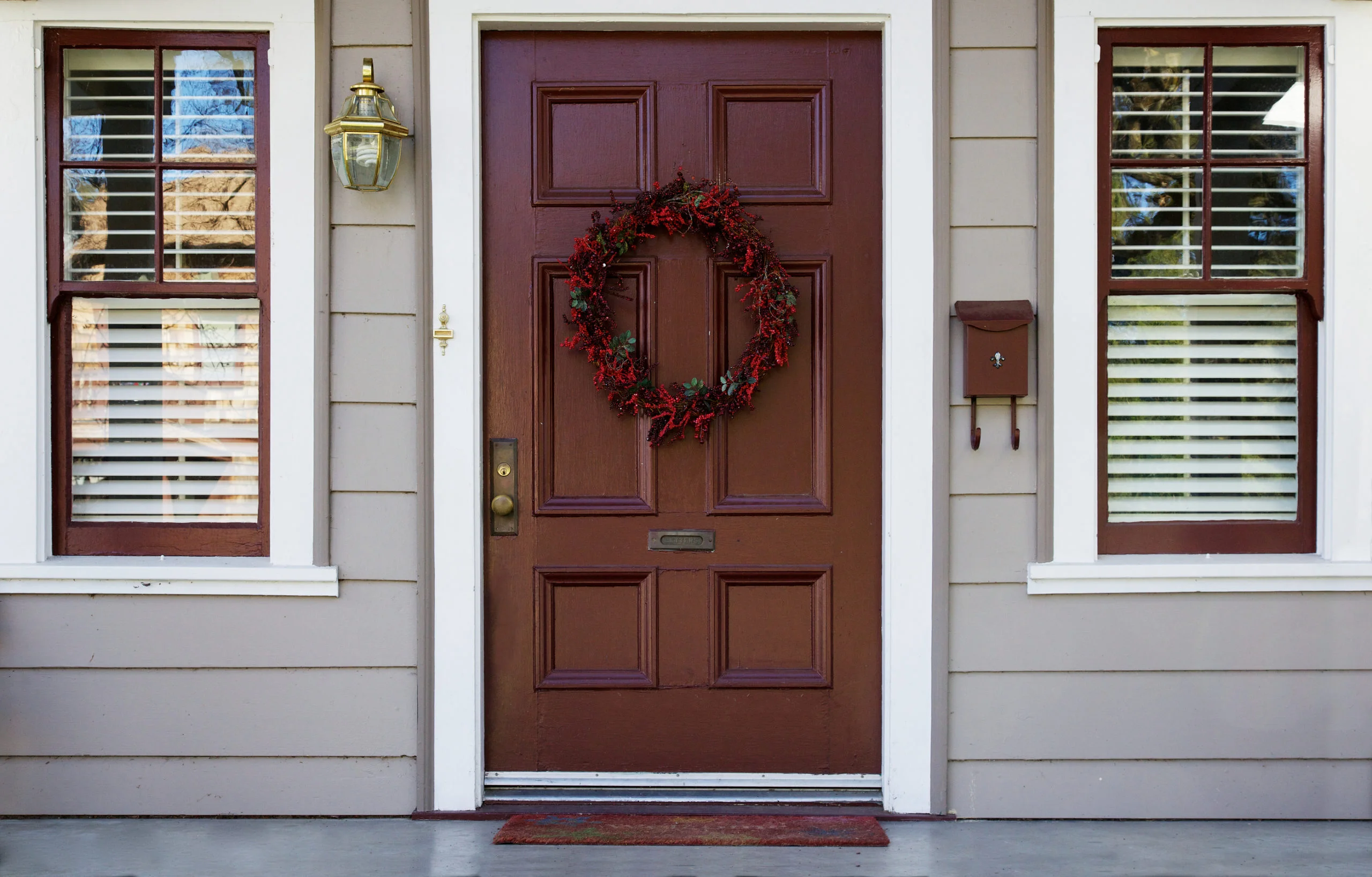
When it comes to timeless elegance, wood doors are in a league of their own. They evoke a sense of warmth and tradition that can be tailored to suit any architectural style. From the rustic charm of a log cabin to the stately presence of a colonial estate, wood entry doors can be customized to match your unique aesthetic.
However, keep in mind that this natural beauty comes at a cost and requires regular maintenance for protection against the elements.
Types of Wood Front Entry Doors
Choosing a wood door means exploring a forest of options. Solid wood doors boast a hefty presence and a rich variety of species, while engineered wood core doors balance stability with cost-effectiveness.
If you want the look of wood without the substantial investment, wood veneer doors provide a middle ground with a paint-ready surface that is budget-friendly.
Pros and Cons of Wood Front Entry Doors
The appeal of wood doors is indisputable, given their ability to be molded, stained, and styled according to your preferences. Yet, homeowners must be prepared for the reality of warping and the need for periodic re-staining or repainting to preserve their doors’ integrity and appearance. While wood doors are insulators by nature, they don’t quite match the energy efficiency of their fiberglass or steel counterparts.
Fiberglass Front Entry Doors: Durability and Versatility
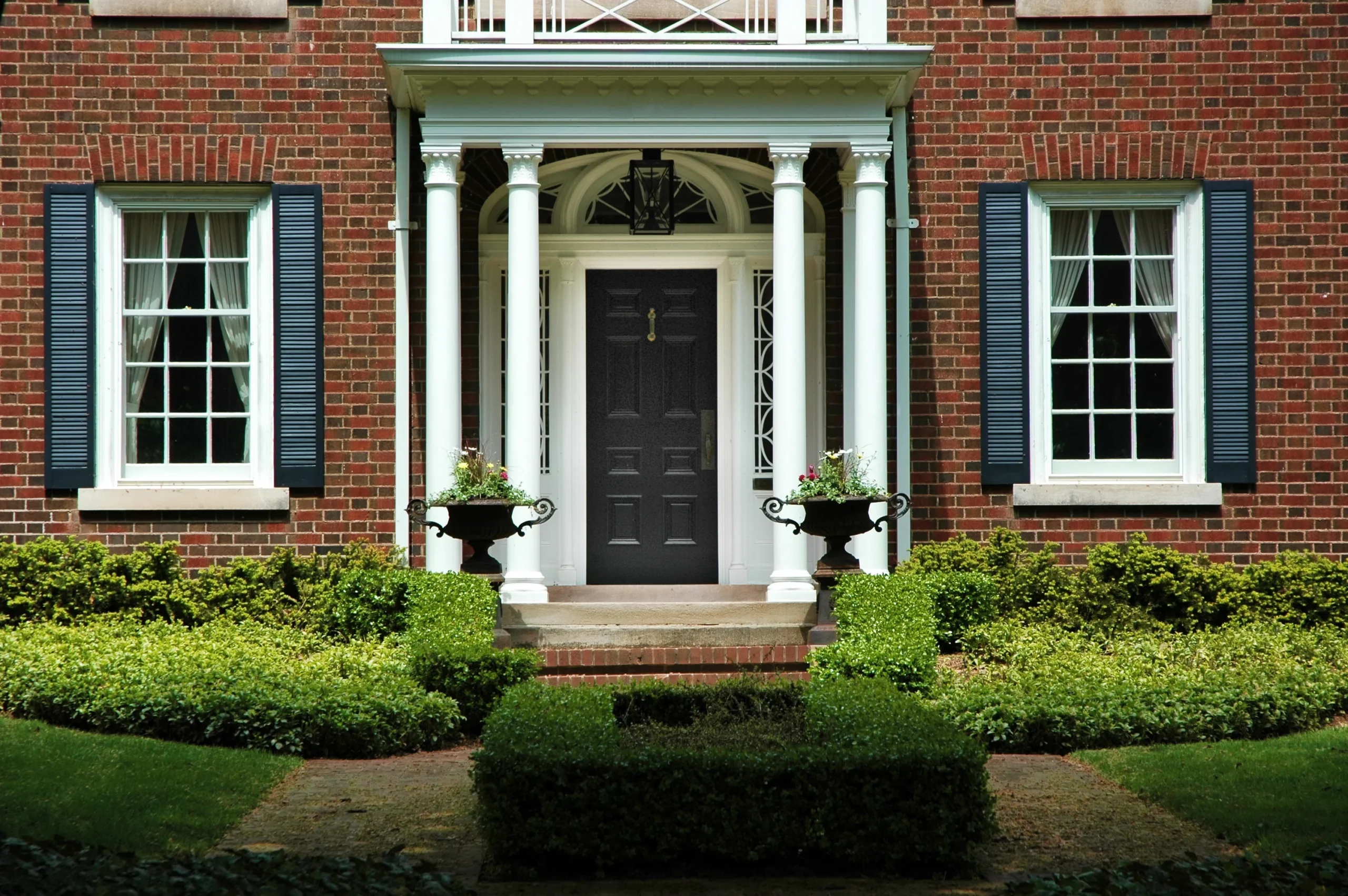
Fiberglass front doors have risen in popularity, striking a balance between the authentic look of wood and the resilience of synthetic materials. They stand up to the rigors of harsh climates, like those in Illinois, without flinching or fading. When considering a steel or fiberglass door, it’s important to note the benefits of fiberglass doors in such conditions.
Available in finishes that mimic Cherry, Mahogany, and even Knotty Alder, fiberglass doors are the chameleons of the entryway, offering the warmth of wood without the high maintenance.
Fiberglass Door Features
Peek behind the wood-like facade of a fiberglass door, and you’ll find a robust wooden framework filled with insulating foam. This composite construction combines the best of both worlds: the classic aesthetic of wood with the energy efficiency of modern materials.
A perennial favorite due to their low maintenance, fiberglass doors remain unaffected by changing weather conditions.
Pros and Cons of Fiberglass Front Entry Doors
The upfront cost of a fiberglass door can be a hurdle, yet its long-term benefits often justify the investment. Fiberglass doors offer:
- A long lifespan surpassing many wood doors
- A virtually maintenance-free nature exceeding steel
- Energy efficiency
- Durability
But for those with non-standard door openings, be mindful that customization may come at an additional cost.
Steel Front Entry Doors: Strength and Security
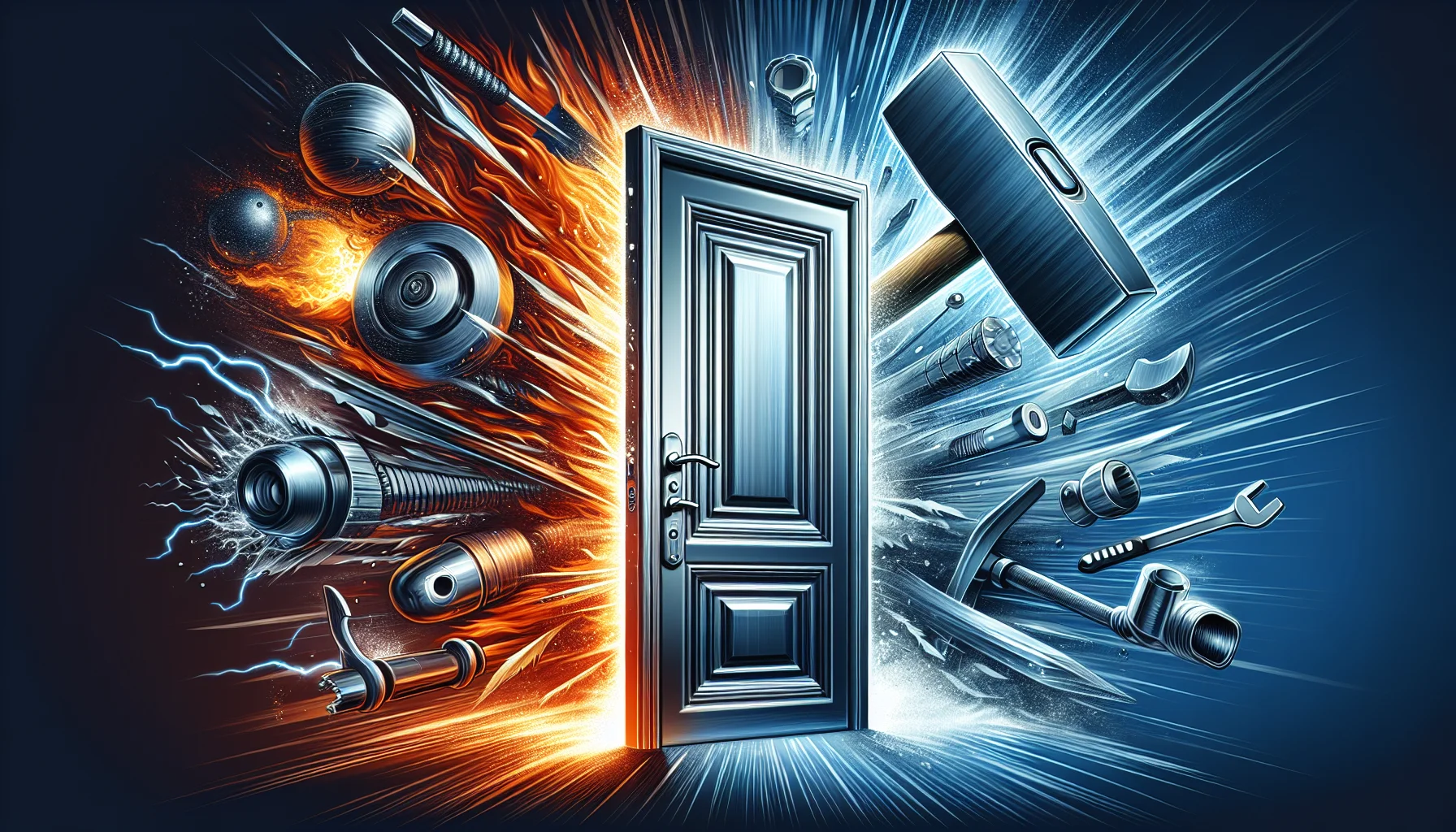
Mentioning steel doors often brings to mind images of impenetrable fortresses and staunch barriers. Indeed, steel is synonymous with security, offering unparalleled strength and durability. Not only do steel entry doors resist warping and cracking, but they also serve as a stalwart guardian against break-ins, making them an ideal choice for both main and auxiliary entry points like garages and side doors.
Steel Door Features
Look closer at steel doors and you’ll find a variety of textures and finishes, from sleek and smooth to richly embossed wood grains. Paired with high-density foam insulation and options for thermal breaks, these doors are not just about strength; they’re about smart energy conservation. And while they’re generally low-maintenance, it’s worth noting that they can dent and may require some TLC if the protective finish is breached.
Pros and Cons of Steel Doors
For homeowners counting pennies, steel doors are a budget-friendly sentinel at the threshold. Their affordability, coupled with a high level of security, makes them a popular option for many. However, without meticulous installation and maintenance, their metal skin may surrender to rust, and their formidable presence to unsightly dents.
Comparing Front Entry Door Materials: Making the Right Choice
As we present the contenders for exterior door material—wood, fiberglass, steel, and aluminum—each with its advantages and disadvantages, it’s evident that the “best” door material is a subjective choice. It’s about finding the right fit for your home’s climate, your desire for low maintenance, and your penchant for style.
The choice becomes less about which door is superior and more about which door aligns with the unique tapestry of your life.
Cost Comparison
The cost of choosing a door varies as much as the doors themselves. From the humble beginnings of steel and aluminum doors at around $100 to the grandeur of high-end wood and fiberglass options that can reach $2,000, your budget will guide you. While steel doors might begin on the lower end, premium models can quickly climb to the upper echelons of the price spectrum.
Durability Comparison
When it comes to durability, each material showcases its strengths and exposes its weaknesses. Here are some examples:
- Wood’s classic charm requires vigilance against decay.
- Fiberglass stands unmarred by warping or rot.
- Steel’s might is evident in its rigidity, although it may falter under forceful blows.
Aluminum, the lightweight alternative, resists corrosion but may not withstand the same level of abuse as steel.
Maintenance Comparison
The maintenance requirements for each material differ significantly. Aluminum doors lead the pack with their low-maintenance enamel finish and rust-resistant nature. This stark contrasts with wood doors, which demand regular attention to maintain their grandeur.
Homeowners must consider not only the initial cost but also the investment of time and effort into their door’s upkeep.
Energy Efficiency Comparison
Energy efficiency plays a critical role in the door selection process, especially in regions with extreme temperature fluctuations. Here, steel doors shine, boasting insulating properties that far surpass the natural insulating abilities of wood. This efficiency is not just about comfort; it’s an investment in your home’s energy footprint and, ultimately, your utility bills.
Summary
Navigating the landscape of entry door materials is a journey of balancing aesthetics with practicality. Wood entrances with their customizable charm, fiberglass with its stalwart durability, steel with its impenetrable security, and aluminum with its modern flair—each holds the key to transforming your home’s facade. Armed with the insights to weigh cost against durability, upkeep against energy efficiency, you are now poised to make a choice that resonates with your home’s spirit and your lifestyle.
Frequently Asked Questions
What are the main factors to consider when choosing a front door material?
When choosing a front door material, consider the local climate, security needs, maintenance expectations, and personal style preferences. These factors will help you make a well-informed decision.
Are fiberglass doors as customizable as wood doors?
Wood doors generally offer more options for personalization and customization compared to fiberglass doors, which offer a variety of finishes and styles.
What are the advantages of steel doors over other materials?
Steel doors are highly durable, provide superior security, and offer better energy efficiency than wood doors. Overall, the advantages of steel doors make them a practical choice for many homeowners.
Can aluminum doors be considered energy efficient?
Yes, the energy efficiency of aluminum doors depends on their specific design and features, such as thermal breaks and insulation. Aluminum doors can be energy efficient with the right features.
How do glass panels affect the energy efficiency of a front door?
Glass panels can enhance natural light but may affect energy efficiency. Choosing low-E insulating glass can provide thermal protection and help maintain energy efficiency.
Contact See-Thru Windows and Doors for all your Front Entry Door needs.

